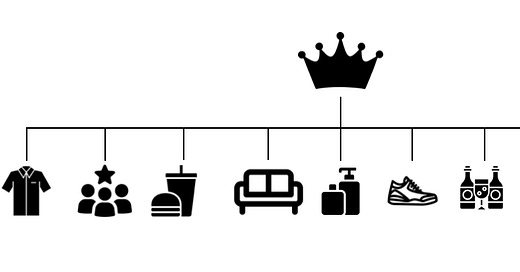I write weekly newsletter about how the new forms of social, cultural, and environmental capital change brand strategy. It has been selected as one of the best single-operator newsletters on the Internet. If you enjoy this issue, you can pre-order my book, share this newsletter with anyone you think may find it useful, and subscribe below:
For those who are new to Sociology of Business and also for those who missed last week’s edition on how buyer value creates brand differentiation in the sea of sameness, you can check it out here.
Much has been said about the decline of American mass fashion brands. There’s an entire genre of debate around what J.Crew, Ann Taylor, Express, American Eagle Outfitters, Hollister or Tommy Hilfiger can do to revive themselves. Some analysts suggest they should evolve their values, which is undoubtedly true. Others point at changing trends and tastes, which is how fashion operates anyway. Yet others talk about the need to modernize their retail and build their sustainability and community credentials.
Critics challenge mass fashion brands on account of their size, taste or lack of focus. They suggest that the format can be fixed, only if X did Y.
It can’t. Anyone who has recently entered a store, offline or online, of any of the retailers above can attest to it. Even if these brands “fix” what they stand for, sharpen their focus, modernize their retail and their values, they would still not recapture their previous cultural and economic glory.
To save these brands is to break them up and turn them into portfolios of smaller and independent sub-brands. In this scenario, a mass fashion brand can become a house of brands, a brand family, or an endorsing brand. E.g. instead of J.Crew, there is the House of J.Crew. Its portfolio is a selection of a number of smaller, independent sub-brands. This portfolio is not random, but strategic and it reflects the House’s path to market domination. Each brand in the portfolio has a distinct place and clearly defined role.




